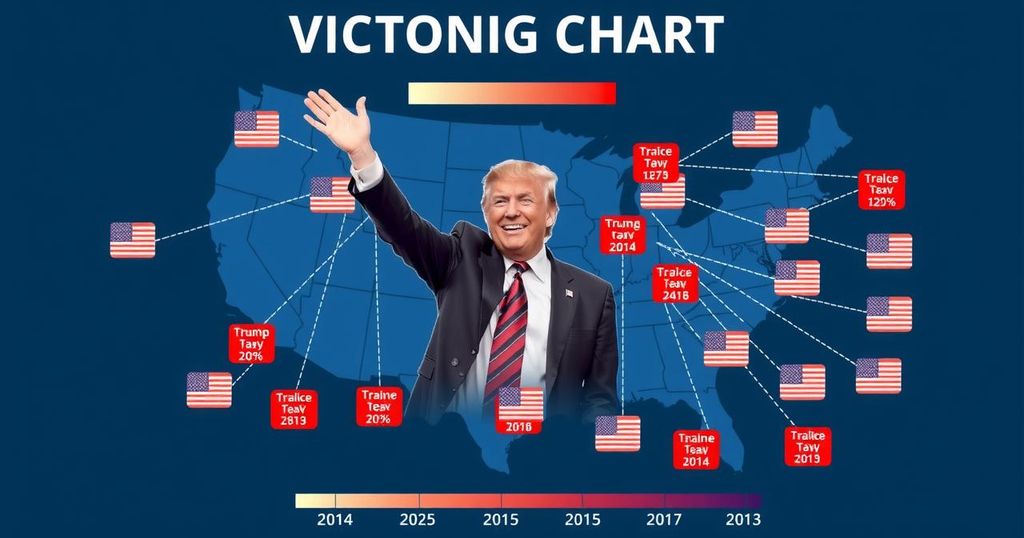Donald Trump’s recent election victory was influenced by low approval ratings for Kamala Harris and President Biden, coupled with an economic environment characterized by low consumer sentiment. Trump demonstrated notable gains, particularly among Latino voters and in suburban areas previously held by Democrats. However, the potential for party realignment remains, highlighting the unpredictable nature of voter preferences and the significance of accountability for elected officials.
In the recent electoral contest, Vice President Kamala Harris faced significant challenges as she took over the campaign from President Joe Biden. The administration’s low popularity, coupled with Biden’s approval rating of only 39%, posed a substantial hurdle. Historical data indicates that since Richard Nixon, no president has won reelection with approval ratings below 50%. Additionally, consumer sentiment, reflecting Americans’ economic outlook, registered at a troubling 70.1 under Biden, below the critical threshold of 82 that has historically signaled reelection success. Contrastingly, Donald Trump exhibited a diverse appeal across demographic lines. Exit polls reveal a noteworthy shift, particularly among Latino voters, with Trump gaining support from Latino men who shifted from a 23-point disadvantage in 2020 to a 12-point advantage in 2024. Notably, Harris’s performance among voters aged 65 and older mirrored Trump’s, unlike Biden who faced a loss in this demographic. Moreover, Trump amplified his strength in rural regions and significantly improved his standing in the suburbs, winning these areas by 4 points after Biden’s narrow victory in 2020. Interestingly, despite extensive discourse on abortion rights during the campaign, voters deeply invested in this issue did not exhibit a clear preference for Harris over Trump. Nevertheless, it is essential for Republicans to temper their expectations given the narrow margins in battleground states. The electoral landscape is inherently unstable, evidenced by the multitude of party shifts in control since 2000. Voters have historically expressed a desire for change, and while they may support Trump now, continued support for his agenda remains uncertain. If Trump fails to meet voter expectations in a potential second term, Democrats may find opportunities to regain ground in subsequent elections, particularly if the Republican Party maintains control of the House, thereby facing accountability for any negative developments.
The analysis of Donald Trump’s election victory emphasizes the intricate dynamics of electoral politics. The context of Vice President Kamala Harris’s leadership transition amid low approval ratings for President Joe Biden showcases the challenges incumbent administrations face during elections. Furthermore, the impact of consumer sentiment and inflation as pivotal factors, reflected in historical trends, underscores how economic conditions can shape electoral outcomes. Trump’s appeal across various demographics, particularly Latino voters, denotes shifting electoral preferences that defy prior norms. Lastly, the warning against overconfidence for Republicans signifies the fickle nature of voter allegiance in contemporary politics, rooted in historical precedents that show frequent party shifts in governance.
In conclusion, Donald Trump’s election victory illustrates critical facets of electoral behavior, notably the importance of approval ratings and consumer sentiment in shaping political fortunes. Trump’s broadened appeal across demographics, particularly in rural and suburban areas, signifies a potential shift in voter priorities. However, the narrow margins and changing electoral dynamics serve as a reminder that no outcome is guaranteed, and future electoral success will depend on both party actions and voter perceptions. The patterns observed underscore the complexities within the electoral landscape and the imperative for parties to maintain relevance and connection with the electorate.
Original Source: www.usnews.com






